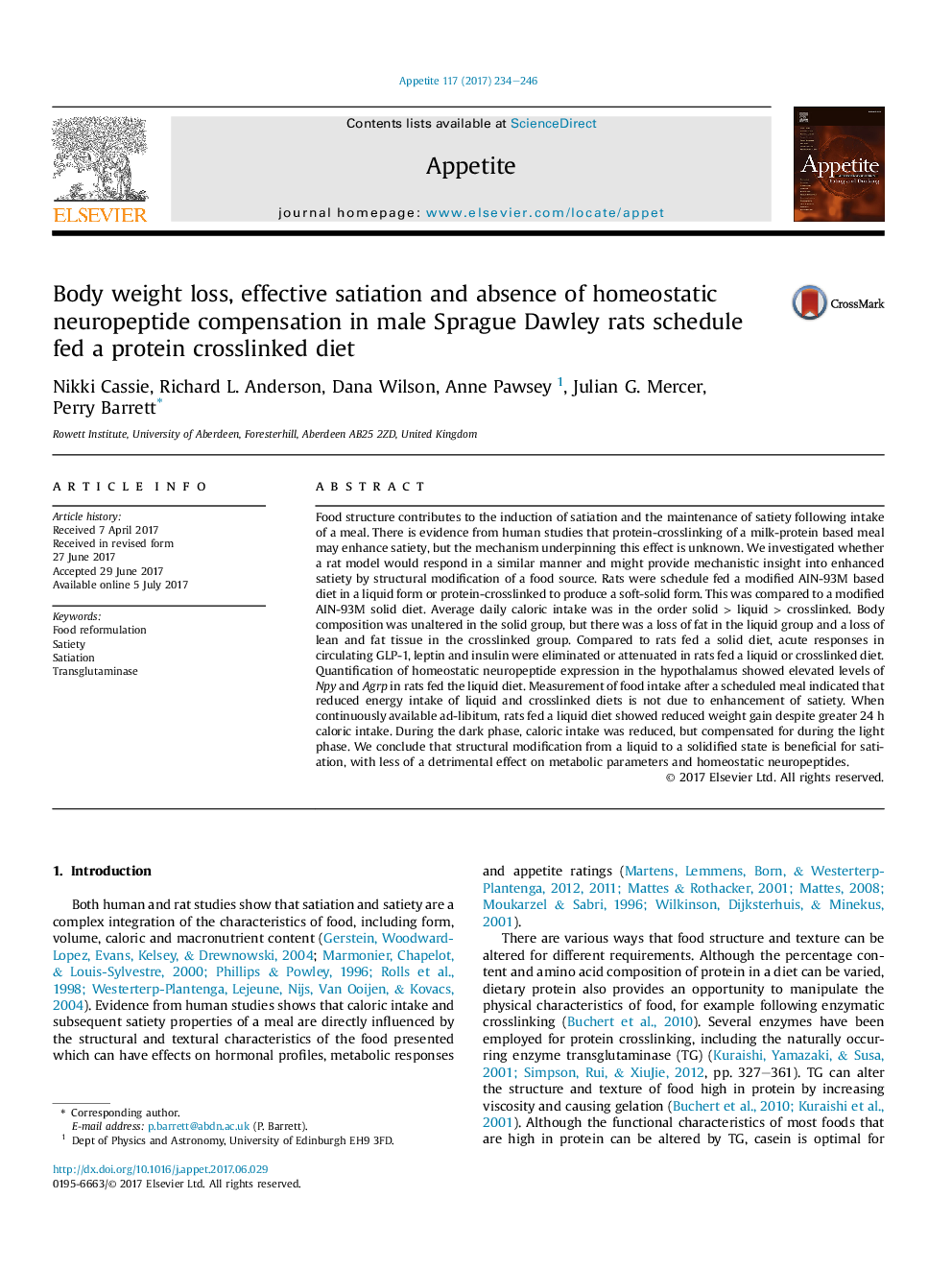| Article ID | Journal | Published Year | Pages | File Type |
|---|---|---|---|---|
| 5044079 | Appetite | 2017 | 13 Pages |
Food structure contributes to the induction of satiation and the maintenance of satiety following intake of a meal. There is evidence from human studies that protein-crosslinking of a milk-protein based meal may enhance satiety, but the mechanism underpinning this effect is unknown. We investigated whether a rat model would respond in a similar manner and might provide mechanistic insight into enhanced satiety by structural modification of a food source. Rats were schedule fed a modified AIN-93M based diet in a liquid form or protein-crosslinked to produce a soft-solid form. This was compared to a modified AIN-93M solid diet. Average daily caloric intake was in the order solid > liquid > crosslinked. Body composition was unaltered in the solid group, but there was a loss of fat in the liquid group and a loss of lean and fat tissue in the crosslinked group. Compared to rats fed a solid diet, acute responses in circulating GLP-1, leptin and insulin were eliminated or attenuated in rats fed a liquid or crosslinked diet. Quantification of homeostatic neuropeptide expression in the hypothalamus showed elevated levels of Npy and Agrp in rats fed the liquid diet. Measurement of food intake after a scheduled meal indicated that reduced energy intake of liquid and crosslinked diets is not due to enhancement of satiety. When continuously available ad-libitum, rats fed a liquid diet showed reduced weight gain despite greater 24 h caloric intake. During the dark phase, caloric intake was reduced, but compensated for during the light phase. We conclude that structural modification from a liquid to a solidified state is beneficial for satiation, with less of a detrimental effect on metabolic parameters and homeostatic neuropeptides.
